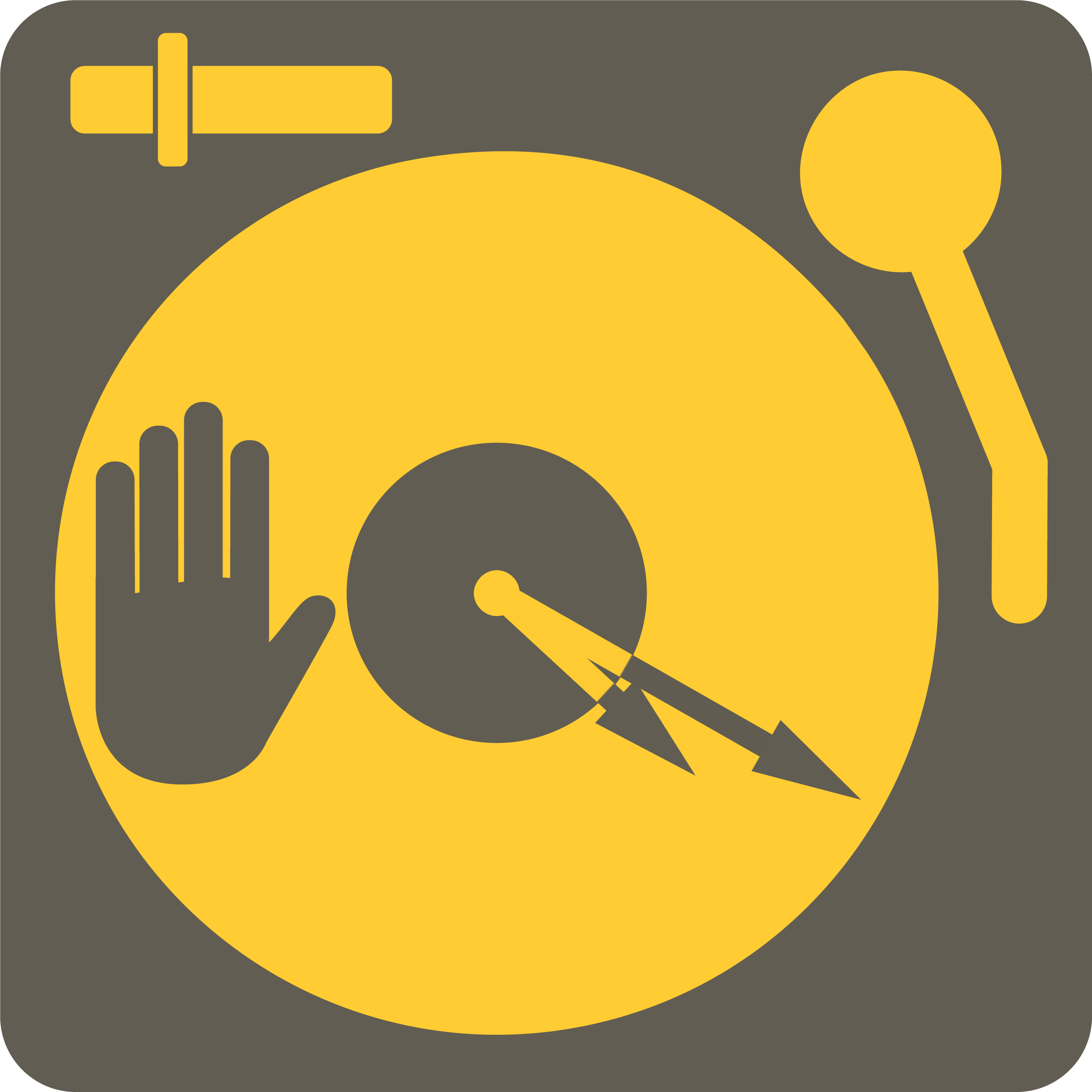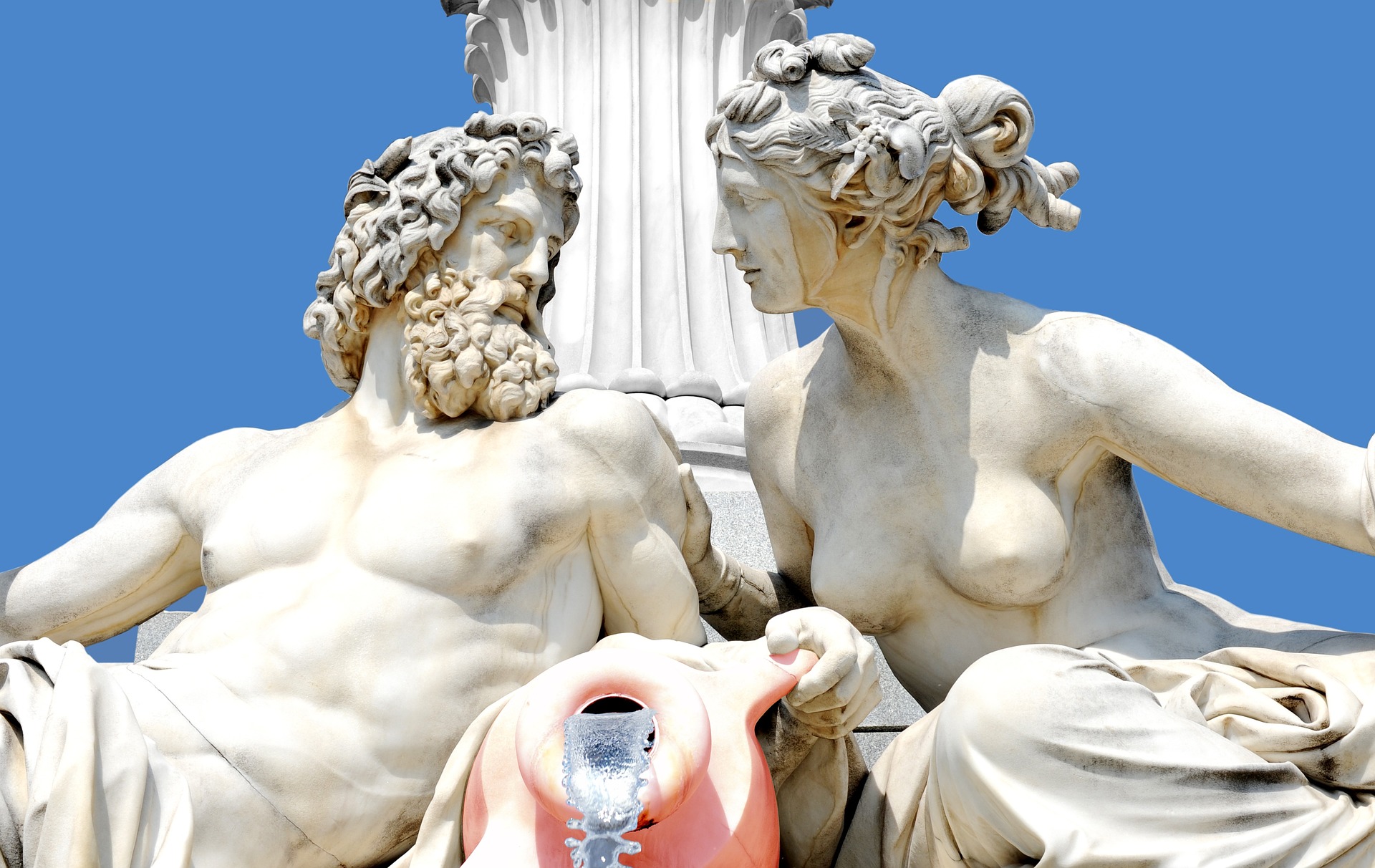Deus
Humans reached an advantage over the rest of the animal kingdom (perhaps other human species) with the advent of augmented reality. The first iterations of such technology did not incorporate computer-generated graphics, just the voices and images in our ancestors’ imagination. A bear can perceive its environment, the forest, the rivers, other wolves. A bear can feel loneliness, joy, and fear. The human world also incorporates a third (augmented) level of reality: the stories that we tell each other every day: stories about gods, countries, money—about ourselves.
In Sapiens, Yuval Noah Harari summarized human evolution since the Paleolithic as the result of a series of revolutions:
1. The cognitive revolution (start at least 72,000 years ago)
Humans evolved the capability of talking about things that existed only in their imagination (i.e., the first iteration of augmented reality). It was the beginning of abstract thinking, symbols, and language. The inference of symbolic behavior is based on what’s preserved in the archeological record in forms such as ornaments (beads, ochre) or art. More recent discoveries suggest that this revolution might have occurred before the emergence of Homo sapiens in Africa.
2. The agricultural revolution (~12,000 years ago)
The domestication of plants (and later animals) is first documented in the Levant. However, it occurred independently in other places (e.g., Asia and America) where the plants and animals were apt for domestication. Up until then, humans were organized in small hunter-gatherer groups. However, the local production of food resources allowed the development of the first permanent settlements; hence, larger human groups. These new hubs (including villages, even small kingdoms) facilitated the sharing of ideas, the advent of new technologies (e.g., irrigation, pottery), and longer-term planning. It was the beginning of the Neolithic Revolution.
This transition did not necessarily make humans healthier or happier. Agriculture started as a side gig to help to supply food regularly. However, slowly but thoroughly, agriculture became an evolutionary trap whose consequences are shaping our daily lives today: Do we own our jobs, our lands, and our homes, or do they own us?
3. The unification of humankind (starting ~5,000 years ago)
Agriculture was essential to strengthen the larger-scale networks among human groups. However, it was not until the Sumerians invented writing and money (first in the form of barley) that human networks expanded notoriously. It became possible to collect taxes from thousands of people, organize complex bureaucracies, establish vast empires and universal religions.
The last step in the large-scale unification process, Harari argues, started in 1492. The “discovery” of vast and rich lands across the Atlantic previously unknown to the European empires jumpstarted the colonial fever. It represented the origins of unprecedented empires split across multiple—non-contiguous—territories. Through indescribable hardship, it originated modern globalization.
4. The scientific revolution (~500 years ago)
In 1543, Mikolaj Kopernik (aka Nicolaus Copernicus) published his heliocentric theory, contradicting the idea that Earth was the center of the universe, the established paradigm since Aristotle (4th century BCE). It represented the emergence of an objective way to observe—and measure—the world. This time saw the developments of the modern scientific method (e.g., by Francis Bacon) and the works on the laws of motion and universal gravitation by Isaac Newton, among many others.
What caused the sudden interest in objectively measuring things? The ambitious exploitation of the newly colonized territories. In the 18th century, the synergy of science and uncontrolled capitalism led to the Industrial Revolution, a more accentuated expression of the Agricultural Revolution trap. Industrialized countries converted humans into cogs, fitting every aspect of the daily routine into the factory schedule (e.g., from school hours to bar happy hours).
In Homo Deus, the sequel to Sapiens, Harari links the Scientific Revolution with another essential transition shaping our lives to this day:
5. The humanist revolution (starting ~600-500 years ago)
The Scientific Revolution took place during the Renaissance, a transitionary time in European history associated with major cultural and social changes and marking the end of the Middle Ages. The Renaissance represented a “rediscovery” of classical antiquity (hence, its name) and the adoption of its own version of humanism: A human-centric worldview. The “David” by Michelangelo or the “Vitruvian Man” by Leonardo da Vinci are good artistic examples of this movement.
In the 18th, the Renaissance and the Scientific Revolution were followed by “The Age of Enlightenment,” whose views opposed the monarchy and Church’s authority. Starting with the French Revolution, the Enlightenment set up the stage for further socio-political revolutions during the 18th and 19th centuries. It also promoted other humanistic movements, such as John Locke’s liberalism. Since then, humanism has evolved and expanded, becoming a new religion:
The humanist religion worships humanity, and expects humanity to play the part that God played in Christianity and Islam, and that the laws of nature played by Buddhism and Daoism. Whereas traditionally the great cosmic plan gave meaning to the life of humans, humanism reverses the roles and expects the experiences of humans to give meaning to the cosmos. According to humanism, humans must draw from within their inner experiences not only the meaning of their own lives, but also the meaning of the entire universe. This is the primary commandment of humanism has given us: create meaning for a meaningless world.
Yuval Noah Harari. Homo Deus, p. 223
6. The current revolution
Humans are undergoing the most dramatic revolution. One that could (1) push us to the realm of the divine—or (2) delete us from the galaxy history, as Sapiens has done with many other species before. A religious shift will lead to this profound transition, Harari argues.
Under scenario (1), humanism will evolve into “techno-humanism.” This new religion considers that humans should use technology to evolve into superior humans. Techno-humanism assumes that humans can be “upgraded” into a-mortal cyborgs, thus becoming machines that feel and think differently, leading to an unimaginable type of consciousness. Homo sapiens (“the wise human”) will evolve into Homo deus (“the god human”), or at least some Sapiens will… The rich will increasingly have access to novel medical advances that will confer them with “God-like” powers such as lifespan elongation. Those unable to self-update and whose job can be better done by ever more intelligent machines will eventually become the “useless class.” Soon, there will not be room for cogs in the workforce.
Under scenario (2), human evolution could follow a darker trajectory if “dataism” takes over. Harari presents dataism as a data-centric religion that constitutes the current “scientific dogma.” Dataism considers that all living organisms can be reduced to algorithms, and life is just data processing. If that were the case, Harari argues, a non-conscious artificial intelligence that knows humans better than we know ourselves will eventually become the new God. Humans will become data bits within a global network. Our actions will no longer be directed by our self-created (or inherited) narratives.
Humans are storytellers. Every day we tell ourselves who we think we are, why we are doing what we are doing, and what our limits are. However, that story can change, and probably should, to serve our better purpose. How much can we positively change ourselves through actions motivated by the right stories? It can’t hurt asking David Goggins.
We are continually writing (often unconsciously) the next chapter of our lives. Over time, it compounds into our evolutionary history. Sapiens has had a God within, all along.
Thanks to David Alba, Marc Furió, Ashley Hammond, Santiago Catalano, Nathan Thompson, and Laia Salles Diez for reading drafts of this.
Cover image by Margit Wallner from pixabay.

